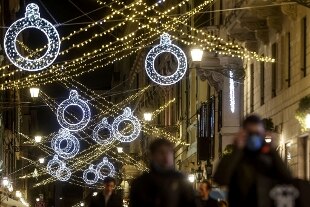Share
09 December 2021A family has already unrolled, on average, a chain of 300 LED lights to dress up the house, starting with the inevitable Christmas tree. There are cribs with LED wires, balconies or gardens with flashing lights where reindeer and statues of Santa Claus are placed. The streets and squares up and down the boot are no less dressed up.
It is Italy in full Christmas spirit with the arrival of Santa's sleigh, ready for the New Year's Eve and to show the way to the old woman most loved by all young and old, the Befana.
Using a play on words, the party atmosphere is not good for the ambient climate. To take into account the cost of 29 days of holidays, ie from 8 December to 6 January, in terms of pollution, is Selectra. Recreating the magic of the holidays, according to Selectra's calculation, consumes 1,603 MWh daily, estimating an ignition of 6 hours a day, or 46,479 MWh for the entire holiday period that also includes New Year's Eve and which ends with the Epiphany. This means that 651 tons of CO2 equivalent are emitted into the atmosphere every day, therefore 18,870 tons of CO2 for the entire ignition period. In perhaps simpler words, it is the same tons of CO2 emitted by 315 cars in a year. To compensate for the emission of fine dust due to the Christmas climate, 944 trees should be planted.
Green Solutions
Giving Up? Certainly not but find more ecological party dresses. Selectra suggests six green tips.
1) Take LED lights that allow energy savings of 80%.
2) Do not overdo the Christmas lights - By adopting small tricks in the furniture, for example by strategically using mirrors or reflective surfaces, you can intensify the effect of colored lights without having to put too many of them.
3) Turn on the internal and external lights when you are at home
4) Limit the hours of ignition. According to Selectra's calculations, it would be enough for all Italian families to keep the decorative lights on one hour less a day to reduce the environmental impact by 109 tons of CO2 every day.
5) Choose a green offer for your electricity supply on the Free Market.
6) Properly dispose of lights that don't work or stop working.
These products, powered by electricity or batteries, become Waste Electrical and Electronic Equipment (WEEE) and must be disposed of correctly in ecological islands, in municipal collection centers or at shops that sell electrical and electronic items (1Contro1 or 1Contro0) .

